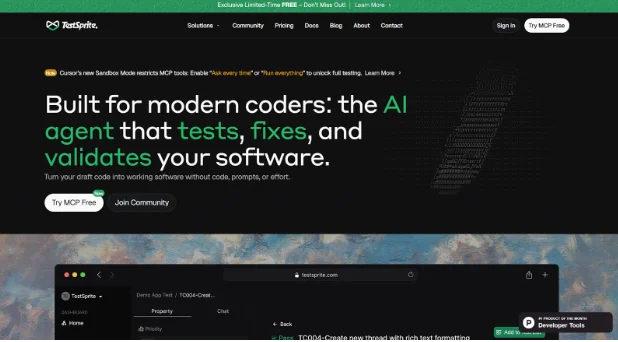
The Internet of Things (IoT) is revolutionizing our interconnected world. Smart devices and sensors have made our homes, cities, and industries more efficient and connected. At the core of this transformation is the Internet of Things device control. They allow us to manage and coordinate a wide range of connected devices. It enables automation, seamless connectivity, and intelligent decision-making. This article explores the details of What is IoT Device Control, uncovering its inner workings, benefits, and challenges. By delving into this crucial aspect of the Internet of Things ecosystem, we aim to provide a comprehensive understanding.
Ultimately, you will grasp how IoT device control empowers industries, improves everyday life, and sets the stage for an exciting future. Join us on this journey as we unlock the potential of Internet of Things device control and its ability to shape our world.
What is IoT Device Control?
IoT device control refers to managing and orchestrating interconnected devices in the Internet of Things (IoT) ecosystem. In simple terms, it enables the efficient management of a diverse range of connected devices.
The significance of Internet of Things device control lies in its ability to streamline operations and enhance connectivity. By overseeing and controlling IoT devices, it enables automation and seamless communication between devices, leading to improved efficiency and productivity.
With IoT device control, users can monitor and interact with their devices from a centralized platform. Whether it’s adjusting settings in a smart home, monitoring industrial machinery, or tracking assets, Internet of Things device control empowers users to oversee and control their devices effortlessly.
Moreover, IoT device control plays a crucial role in enabling seamless connectivity. Acting as a mediator between devices and the broader network infrastructure, it ensures smooth communication and real-time data exchange. This enables quick decision-making and the implementation of intelligent algorithms and analytics.
Key Components of IoT Device Control
When it comes to the Internet of Things device control, several key components work together seamlessly to ensure efficient management and communication within the Internet of Things (IoT) ecosystem. Understanding these components is essential for harnessing the power of IoT device control effectively.
IoT Devices
At the core of IoT device control are the interconnected devices themselves. These devices, equipped with sensors and connectivity capabilities, collect and transmit data to facilitate various functionalities. Examples of Internet of Things devices include wearable fitness trackers, smart thermostats, and industrial sensors.
IoT Gateways
Internet of Things gateways serve as the bridge between IoT devices and the network. These devices enable the secure connection and communication of Internet of Things devices with cloud platforms or other backend systems. They often perform data filtering, protocol translation, and device management functions, ensuring reliable and efficient data transfer.
Cloud Platforms
Cloud platforms play a crucial role in Internet of Things device control by leveraging cloud services for device management and data processing. These platforms provide storage, analytics, and real-time monitoring capabilities, enabling remote device management, data visualization, and advanced analytics to derive valuable insights.
Protocols and Standards
Communication protocols such as MQTT (Message Queuing Telemetry Transport), CoAP (Constrained Application Protocol), and others facilitate seamless data exchange between IoT devices, gateways, and cloud platforms. Standardization of protocols ensures interoperability and compatibility between different devices and systems.
Control Interfaces
User-friendly control interfaces, such as mobile applications or web-based dashboards, allow users to manage and interact with their Internet of Things devices effortlessly. These interfaces provide:
- Intuitive controls.
- Real-time device status updates.
- The ability to set preferences and automation rules.
By comprehending the significance of these key components, businesses and individuals can harness the full potential of the Internet of Things device control. This understanding enables efficient device management, seamless connectivity, and the utilization of cloud-based services for data analysis and actionable insights.
Embracing these components propels organizations toward building smart, interconnected ecosystems that drive innovation and efficiency.
Understanding IoT device control is essential for maximizing the potential of the Internet of Things. This article provides:
- An overview of how IoT devices communicate.
- The role of gateways and cloud platforms.
- The importance of real-time data processing.
How Does IoT Device Control Work?
Internet of Things device control relies on a network that connects devices, gateways, and cloud platforms. Devices collect data through sensors and send it to gateways, which process and transmit it to the cloud platform for further analysis.
Communication happens through control messages and commands. These messages contain instructions or requests exchanged between devices and gateways, enabling device monitoring, configuration changes, and activating specific functions. Gateways forward these messages to the cloud platform, where they are processed, and appropriate commands are sent back to devices.
Real-time data processing and analytics are crucial for intelligent device control. Cloud platforms analyze the collected data using advanced algorithms and machine learning, allowing real-time monitoring, anomaly detection, predictive maintenance, and other intelligent features. These insights optimize operations, enhance efficiency, and enable proactive decision-making.
By understanding the inner workings of IoT device control, individuals and businesses can leverage the IoT ecosystem to improve efficiency and make informed decisions based on real-time data analysis.
Benefits of IoT Device Control
IoT device control brings forth a multitude of advantages, revolutionizing industries and enhancing our daily lives. By effectively managing and orchestrating interconnected devices, IoT device control offers enhanced automation, improved security, cost savings, and optimization of resources. Additionally, the Internet of Things device control finds diverse applications across various industries, including smart homes, industrial, healthcare, and smart cities.
One of the key benefits of IoT device control is the ability to achieve enhanced automation and operational efficiency. By centrally managing and controlling the Internet of Things devices, tasks that were time-consuming and once manual can now be automated, leading to streamlined operations, reduced human intervention, and increased productivity.
From adjusting lighting and temperature in smart homes to optimizing manufacturing processes in industries, IoT device control plays a pivotal role in driving efficiency and improving overall performance.
Another significant advantage is the improved security and data privacy measures offered by Internet of Things device control. With the proliferation of interconnected devices, security vulnerabilities become a major concern.
IoT device control allows for centralized security management, enabling the implementation of robust security protocols, authentication mechanisms, and encryption methods. This ensures that data transmitted between devices and cloud platforms remains secure, safeguarding sensitive information and protecting against unauthorized access.
Furthermore, Internet of Things device control contributes to cost savings and resource optimization. By monitoring and managing devices in real-time, businesses can identify inefficiencies, reduce energy consumption, and optimize resource allocation.
This leads to significant cost savings and promotes sustainable practices. In addition, predictive maintenance enabled by IoT device control helps prevent equipment failures and downtime, reducing maintenance costs and prolonging the lifespan of assets.
You may also like
100 Best Instagram Names To Get Followers For Boy
Applications of Internet of Things Device Control
The applications of IoT device control span across various industries. In smart homes, IoT device control enables homeowners to control and automate various aspects of their living environment, including lighting, security systems, and appliances.
Industrial Internet of Things leverages device control for predictive maintenance, enabling proactive monitoring and maintenance of machinery, reducing downtime, and optimizing operational efficiency. In the healthcare sector, the Internet of Things device control enables remote patient monitoring, facilitating continuous healthcare management and improving patient outcomes.
Smart cities utilize this device control to manage critical infrastructure, such as transportation systems, waste management, and energy distribution. It leads to efficient resource utilization and sustainable urban development.
Challenges and Considerations in the Internet of Things Device Control
Implementing Internet of Things device control systems poses challenges that require careful consideration for successful deployment. Device heterogeneity and interoperability issues arise from the diverse range of devices operating on various protocols and standards.
Scalability becomes a concern when managing large-scale Internet of Things deployments, necessitating infrastructure and strategies to handle increasing device volume and data. Privacy and data security and are vital to protect sensitive information, requiring robust authentication, encryption, and access control measures.
Considerations for successful IoT device control implementation include standardization and adherence to industry best practices, ensuring compatibility and seamless communication between devices. A reliable network infrastructure with high-speed connectivity supports real-time communication and data exchange. Regular updates and patches for device firmware are essential to maintain security and functionality.
Also, read about
How To Turn Off Auto Swipe On Instagram
Conclusion
This article has emphasized the importance of IoT device control in managing Internet of Things ecosystems. We have discussed What is IoT Device Control and covered key points regarding its components, benefits, challenges, and considerations. It is crucial to recognize the role of Internet of Things device control in enabling automation, enhancing security, and optimizing resource utilization.
As we move forward, the future potential of the Internet of Things device control is promising, and further exploration and adoption of solutions will drive innovation and advancements. Embracing the Internet of Things device control will shape a connected and efficient future.

The Connection Between Accounting Firms And Regulatory Compliance

Why Smart Startups Choose Custom AI Business Solutions Today

How to Optimize Business Operations with Vending Machines in Australia

The Digital Lifeline: How Technology is Revolutionizing Addiction Recovery

From Clicks to Clients: Why Trust-First Local SEO Wins the Long Game

Why Smart Startups Choose Custom AI Business Solutions Today

The Best AI Testing Tools: Revolutionizing Quality Assurance

The Rise of AI in Cybercrime: Are We Prepared for What’s Coming?








